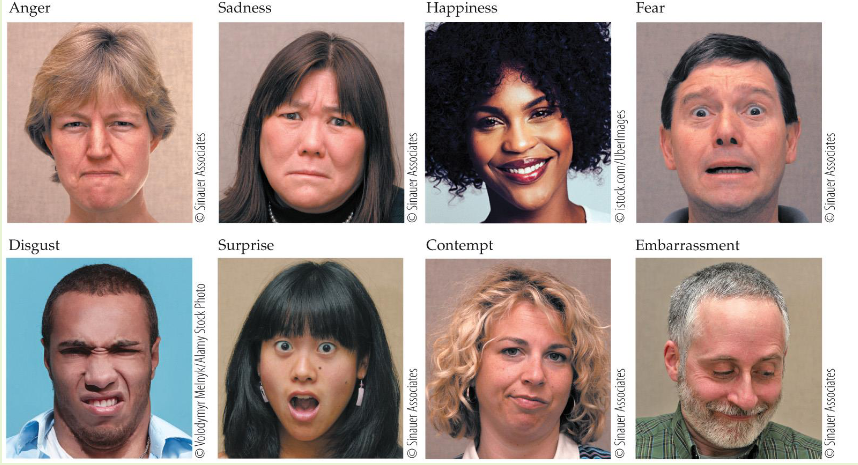Universality of Emotions
1/7
Earn XP
Description and Tags
Made by @agreyr
Name | Mastery | Learn | Test | Matching | Spaced |
|---|
No study sessions yet.
8 Terms
Evolution of emotions - Charles Darwin
Emotional expressions are the product of evolution and should be studied across species; human and nonhuman animals show comparable (though often subtle) emotion with universal meanings
Emotional expressions signal what the animal is likely to do next; if emotional signals are beneficial, they will evolve to more effectively communicate
Principle of antithesis
Opposite messages signaled by opposite movements and postures
Are emotions universal?
Likely 6-8 core emotions, consistent across time and culture
People of different cultures make similar expressions; can identify emotions of others, despite different cultures
Paul Ekman & colleagues core emotions
Anger, sadness, happiness, fear, disgust, surprise, contempt, embarassment

Facial feedback
Facial expressions are mediated by muscles, cranial nerves, and CNS pathways
Facial expressions of emotion can be faked; microexpressions can reveal true feelings, and different muscles are involved in real vs fake smiles
Microexpressions
Ultra-brief facial expressions that reveal true feelings by breaking through fake ones
Muscles involved in fake vs real smiles
Orbicularis oculi (Duchenne/genuine) & Zygomaticus major (both)
Facial feedback hypothesis
Voluntarily controlling muscles can influence our emotional experience